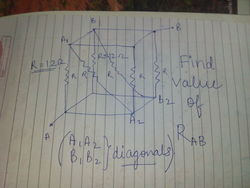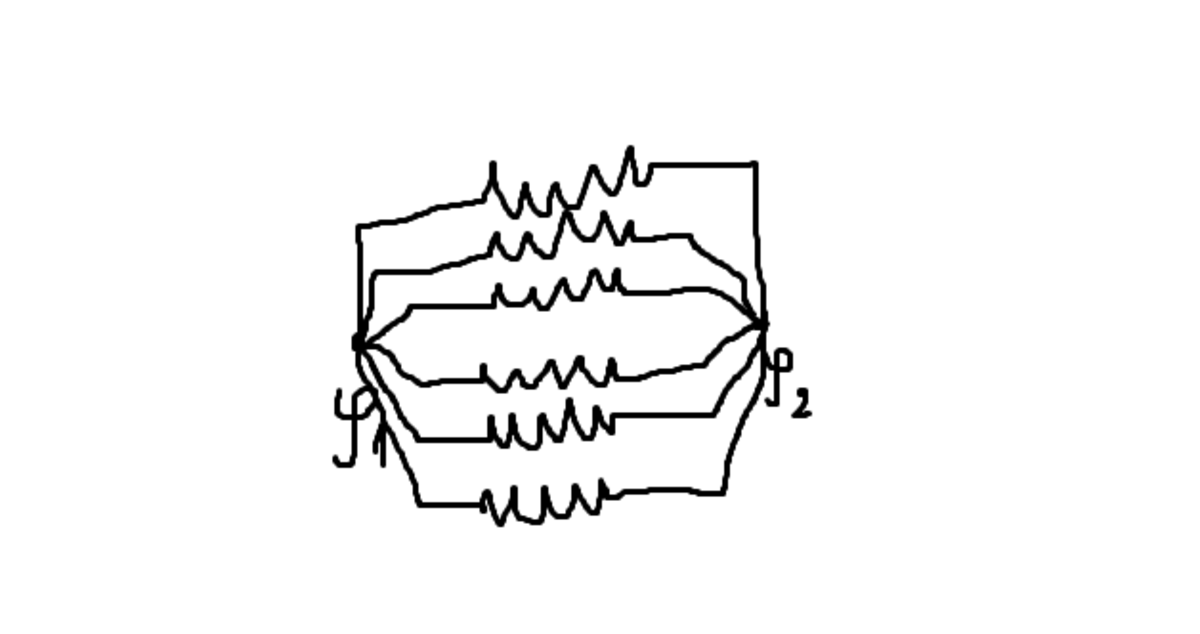This section requires Javascript.
You are seeing this because something didn't load right. We suggest you, (a) try
refreshing the page, (b) enabling javascript if it is disabled on your browser and,
finally, (c)
loading the
non-javascript version of this page
. We're sorry about the hassle.

All the points on the bottom side of the cube has the same potential ( f1 ) , and all of the points on the top side of cube (on picture) also has the same potential ( f2 ). So, this mix of resisters is equivalent to the mix of the resisters on the picture below. Now, we can easily find that
Rab=12/6 =2
.
Now, we can easily find that
Rab=12/6 =2
.